 MyDogBreeds
MyDogBreedsEnglish Water Spaniel is originated from United Kingdom but Bulgarian Shepherd is originated from Bulgaria. English Water Spaniel may grow 24 cm / 9 inches shorter than Bulgarian Shepherd. English Water Spaniel may weigh 37 kg / 81 pounds lesser than Bulgarian Shepherd. English Water Spaniel may live 43 years less than Bulgarian Shepherd. Both English Water Spaniel and Bulgarian Shepherd has almost same litter size. English Water Spaniel requires Low maintenance. But Bulgarian Shepherd requires Moderate maintenance
The English Water Spaniel breed is extinct and has been since the early 1900’s. It was last seen in the 1930s. The breed was a hunting breed, diving for duck and hunting other waterfowl. Legend has it that Shakespeare was referring to this breed of dog in Macbeth when he refers to the “water rug”. Again, in Two Gentlemen of Verona one of the character states about another that “She hath more qualities than a water-spaniel.’
The English Water Spaniel came along before the Irish Water Spaniel and had a part in the development the Curly Coated Retriever, the American Water Spaniel and the Field Spaniel. The English Water Spaniel looks somewhat like a Poodle/Springer Spaniel cross or a Collie. It is not known whether the English Water Spaniel was part of the development of the Irish Water Spaniel.
When the English Water Spaniel was first developed the UKC had a “Water Spaniels other than Irish” and the English Water Spaniel had no standard written and accepted for it yet. But by 1967 the breed was extinct. Still the American Water Spaniel and the Flat Coated Retriever are believed to be descendants of the English Water Spaniel.
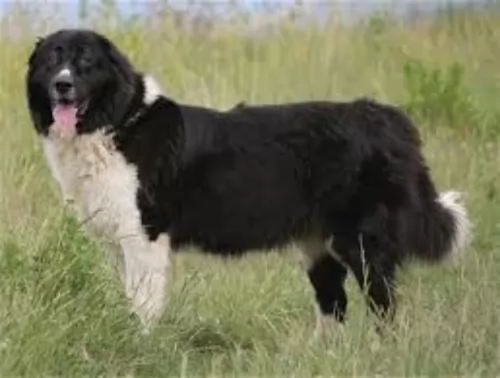 The Bulgarian Shepard Dog comes from the ancient line of Molossers of Central Asia and Tibet, and the shepherds of the Balkans, Turkey and Caucasus. Among the oldest and most valued of the working dogs of Europe, the Bulgarian Shepherd breed was created by mixing the Balkan breeds with the dogs from Central Asia by the proto-Bulgarians around the 7th century. The Karakachanskoto Kuche was introduced to Bulgaria and accepted by the sheep herders. Mixing this breed in with the Balkan and Central Asian mix developed the Bulgarian Shepherd we know today. In the long run the original Karakachanskoto Kuche became extinct, replaced entirely by the Bulgarian Shepherd even in places where the new breed is still called by the Kuche name. Although the breeds are not the same, most of the dog world does not know the difference.
The Bulgarian Shepard Dog comes from the ancient line of Molossers of Central Asia and Tibet, and the shepherds of the Balkans, Turkey and Caucasus. Among the oldest and most valued of the working dogs of Europe, the Bulgarian Shepherd breed was created by mixing the Balkan breeds with the dogs from Central Asia by the proto-Bulgarians around the 7th century. The Karakachanskoto Kuche was introduced to Bulgaria and accepted by the sheep herders. Mixing this breed in with the Balkan and Central Asian mix developed the Bulgarian Shepherd we know today. In the long run the original Karakachanskoto Kuche became extinct, replaced entirely by the Bulgarian Shepherd even in places where the new breed is still called by the Kuche name. Although the breeds are not the same, most of the dog world does not know the difference.
In Bulgaria however the Karakachan is a national treasure and the history of the breed runs deep. One Kuche could run up to 1200 animals and hundreds were used by the herdsmen in the mountains of Bulgaria. There were many regional types of Bulgarian Shepherds with very little difference between those types. These dogs were so prized by the shepherds that the dogs ate first before the people. The dogs however ate a vegetarian diet of milk, wheat, water and oats. The Bulgarian Shepherd lives a long life of often over 20 years. The Bulgarian Army made good use of these dogs early in the 20th century.
Following World War II, the wolves were close to extinction and property in Bulgaria was nationalized. There was no longer a need for a large force of working dogs. The Communist government exterminated large numbers of sheep dogs including the Bulgarian Shepherd. Only those species on government owned farms and in remote regions survived. When the government farms were disbanded in the early 20th century, these dogs were exterminated as well. Only those in the mountains survived. Commercial breeding of the Bulgarian Shepherd in the end of the century has resulted in controversy as other breeds came into the breeding program.
Use of breeds such as Sarplaninacs, Caucasian Ovcharkas, St. Bernards, Central Asian Ovcharkas and Bosnian Tornjaks in these programs resulted in Bulgarian Shepherd or Karakachans that were a lot different from the original breed. There is therefore some concern about the future of the breed in Bulgaria, yet they received official Bulgarian national recognition in 2000. Today’s Bulgarian Shepherd is a guard dog for both property and livestock.
The official standard for the breed came about in 1991 and in 2005 it was recognized by the Bulgarian State Commission for Animal Breeds. Only those dogs that meet this standard are considered “true” Karakachans. The Bulgarian Shepherds are willing to fight bears and wolves in defense of its family and flock. The dog is brave and loyal, dignified and powerful. They are recognized by both the Dog Registry of America, Inc. (DRA) and the Bulgarian Republican Federation of Cynology (BRFC) a member of the FCI.
Resembling the Springer Spaniel, poodle, collie and setter the English Water Spaniel has very little in common with the Irish Water Spaniel in respect to looks. The English has a narrow and somewhat longer head their than other spaniels and they have long furry ears. Their body is stout, and they are shaped like a barrel – more like a Clumber. With long legs and large feet, it is ready to take to the hunt. There coat was waterproof, and their toes were webbed.
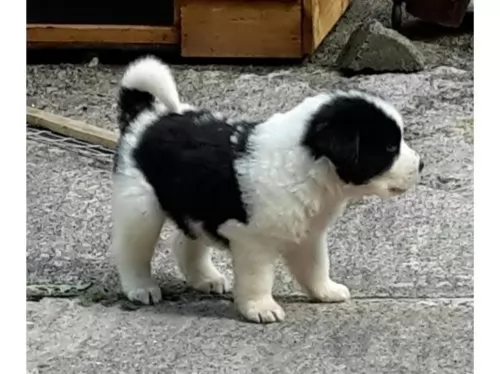 A massive, powerful and muscular Molosser, the Bulgarian Shepherd is strong, agile, powerful and fast. They are intelligent and reliable. They have a long, thick, harsh coat in white with patches of black. Their skull is massive and broad with a furrowed forehead. The muzzle is massive as well while the nose has wide nostrils and is fairly large. It has close fitting, thick lips with strong, scissor bite jaws. The Bulgarian Shepherd’s eyes are deep, oblique and small. They are either hazel or dark. They have an intelligent and confident, yet firm almost grim expression.
A massive, powerful and muscular Molosser, the Bulgarian Shepherd is strong, agile, powerful and fast. They are intelligent and reliable. They have a long, thick, harsh coat in white with patches of black. Their skull is massive and broad with a furrowed forehead. The muzzle is massive as well while the nose has wide nostrils and is fairly large. It has close fitting, thick lips with strong, scissor bite jaws. The Bulgarian Shepherd’s eyes are deep, oblique and small. They are either hazel or dark. They have an intelligent and confident, yet firm almost grim expression.
Their ears are low set, small and v-shaped. They sit close to the head which sits on a powerful but short neck. They have a broad back, well-muscled body with a deep chest and long, rough tail. Their gait is a trot with a spring in their step. There are two types of coats – longhaired and shorthaired with no undercoats.
The English Water Spaniel was aloof with strangers but loyal with his hunter. He was a little stubborn and an excellent water dog. They loved being in the water and could enter it without making any noise so as not to frighten his prey. He was highly intelligent and trainable. He also was very affectionate with his people.
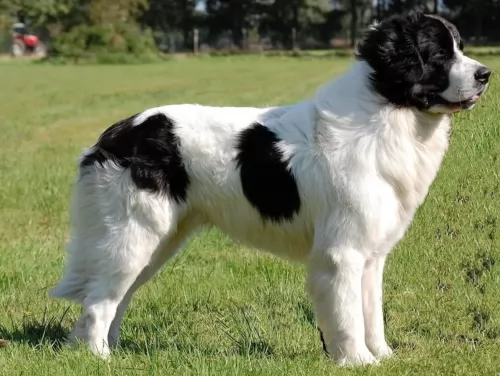 This is a working dog, intelligent and independent guard dog. Reserved around strangers but loyal and devoted with his family. Tolerant of children in their family if they were raised with them. Not only will she defend human family members, she will guard and defend household pets as well. He is quite capable of making her own independent decisions. These are very intense guard dogs that will respond aggressively if they think their people are being attacked.
This is a working dog, intelligent and independent guard dog. Reserved around strangers but loyal and devoted with his family. Tolerant of children in their family if they were raised with them. Not only will she defend human family members, she will guard and defend household pets as well. He is quite capable of making her own independent decisions. These are very intense guard dogs that will respond aggressively if they think their people are being attacked.
The English Water Spaniel is a fairly healthy breed given to some fairly common disorders such as:
Can lead to lameness and arthritis
Arterial fib and flutter and other problems that could lead to death.
This is a disease seem in several “Dwarf” breeds such as Corgis, as well as in many spaniels. This is the canine version of Lou Gehrig’s Disease or ALS and it is fatal.
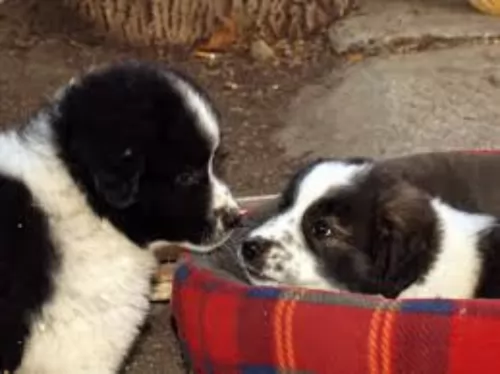 The breed itself is known to be healthy but they do face some of the usual health issues of the massive, giant breeds. This includes knee and elbow dislocation; hip dysplasia; bloat; entropion and osteosarcoma. All of these conditions require medical intervention, but bloat and osteosarcoma are the deadliest. Bloat needs immediate attention and osteosarcoma is a deadly bone cancer.
The breed itself is known to be healthy but they do face some of the usual health issues of the massive, giant breeds. This includes knee and elbow dislocation; hip dysplasia; bloat; entropion and osteosarcoma. All of these conditions require medical intervention, but bloat and osteosarcoma are the deadliest. Bloat needs immediate attention and osteosarcoma is a deadly bone cancer.
The English Water Spaniel is not an overly energetic dog and has a tendency to over eat. Feed him 1 to 1.5 cups of high quality dry dog food over two meals each day.
In addition to the health issues mentioned earlier, the English Water Spaniel is also prone to:
Pattern baldness – is genetic and occurs on the neck and back of the hind legs.
English Water Spaniels can have these in old age like most other breeds.
Clumps form in the retinal tissue and can lead to blindness
The English Water Spaniel was a worker and an outdoor athlete at a time before organized canine games and activities such as agility and flyball. They loved to swim, and they loved to hunt. Without a job to do they could become barky and destructive.
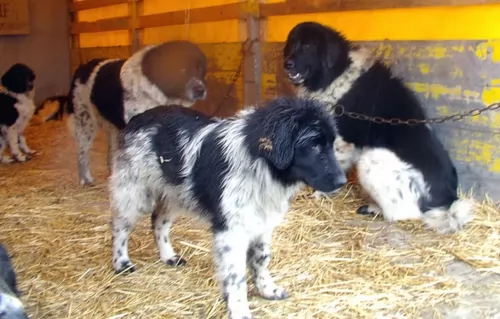 These are large dogs with large appetites, but you want to keep them lean and active. Feed them at least twice a day with a high quality large or giant dog dry food. Four to five cups of food per day is the maximum.
These are large dogs with large appetites, but you want to keep them lean and active. Feed them at least twice a day with a high quality large or giant dog dry food. Four to five cups of food per day is the maximum.
Patellar Luxation – a floating kneecap or dislocated knee. Will cause lameness.
Osteosarcoma – bone cancer must be treated immediately as it is potentially fatal.
The Bulgarian Shepherd needs a good amount of exercise every day. Remember this is a working breed and they need a job. Long walks every day are essential for his well-being.